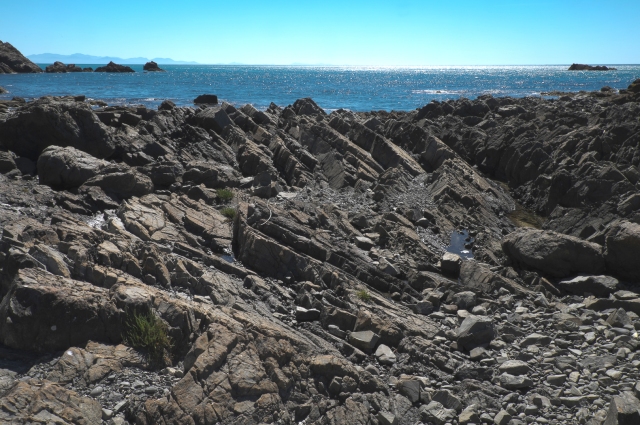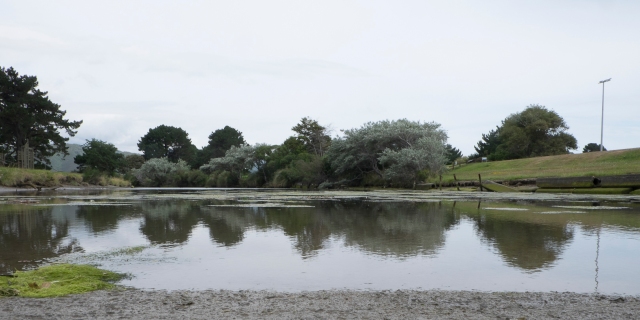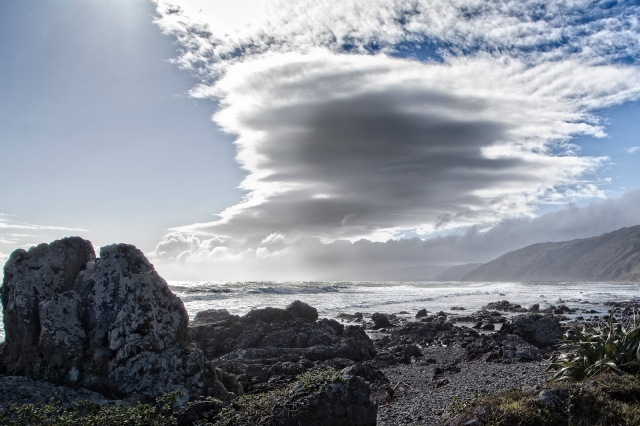Since I last wrote, the region has had more than its fair share of wild and downright ugly days. If I were a depressive personality this would be getting me down. Happily, I can sometimes use the bad days to my advantage. And in any case, many of you have sent me kind and affirming messages which have been balm to my soul. Thank you to those kind people who take the trouble to send messages.
A month or so ago, WordPress changed their default editor, and I didn’t notice that images no longer provided a “click-to-enlarge”. I have corrected that as of this issue and may eventually get back to the issues that were affected. Please do click for a much bigger image

When I look up from my keyboard and notice that the trees outside are not moving, I check on the other side of the house for confirmation, and unless domestic courtesies require otherwise, head for the nearest body of water likely to deliver attractive reflections. On this occasion, I went to the Pauatahanui Inlet where the bright blue sky and the gold reeds provided a nice contrast with the Little Shag. “Little” is not a casual adjective here. That is the formal name of the species, as distinct from the Little Black, the Pied, the Spotted and about half a dozen more common types in New Zealand.

Very occasionally I will turn my attention to the structure of the city. I have probably commented before that, for a seismically risky city, Wellington has a large number of buildings with glass curtain frontages. Leaving aside the question of what happens when the earth moves, these buildings present some nice reflections. In this case, the building at 155 the Terrace is reflected from a tower block down on Lambton Quay. I took care to line the framework as well as possible, and cropped and trimmed the last bit in the computer.

On the Haywards Hill one evening two weeks ago, I just had to pull over to the side of the road to catch this spectacular formation. I was on my way to act as judge for another camera club’s competition, otherwise I might have lingered longer to catch the brilliant orange colour which came with the setting sun. Dozens of my photographic friends produced stunning images of this event.

Mary and I were driving to Waikanae the next day to enjoy lunch with some friends of very long standing. Despite the clear blue sky and the glitter on the water, the thing that caused me to stop at the Pukerua Bay lookout was the impression of relentless power from the waves being driven in from the Tasman by that strong Nor’Wester. The other thing that lookout offers is the challenge of forcing your way back into the North-bound traffic.

The wind did not abate, and if anything it started to get serious. According to the TV news, it peaked at 121 km/h the next day. I went looking for waves, but found little of interest. That proves that I was not looking clearly because some of my friends produced some great wave shots. However, the wind coming into Evans Bay after its journey across the harbour produced some interesting effects. The swirling williwaws lifted their spouts a hundred metres or more from the surface, and I had to work hard to keep my lens dry. I loved the dark sky over the Western hills.

I know that modern architects work really hard to ensure that all the bits of the building remain attached even when the earth moves. Nevertheless, recent demolitions pursuant to the Kaikoura earthquake (14 November 2016) tend to suggest that there are some factors that even the best of them didn’t think of. I love the shapes, colours and textures of a modern cityscape. On the other hand I see hundreds of tonnes of sheeet glass seemingly just hanging on the outside of the building, and I imagine it falling as a huge guillotine. As long as the fixing methods perform as expected I am happy.

If we are lucky, after we have endured a few days of sustained wind, we get a break for a day or two before it all comes roaring back in the other direction. I like the Southerlies for the spectacular waves they deliver on the coast between the harbour entrance and Owhiro Bay. Jagged rocks which are typical of our Southern shoreline help to break the incoming waves and sometimes create astonishing explosions of water. A technique advocated by one of my photographic idols is to be deliberate about the tonal relationships between various elements of the image. Notice the clarity of the rocks and the successive reduction in tonal intensity as we progress to the mountains across the strait.

And just like that, the new day dawns still and golden. Mary recognises the signs and packs a lunch for me to take on my wandering. I know how lucky I am. Unlike the preceding image, this one presents a clear sharp day and a relatively short distance between near and far, so the tonal range need not be an issue. I really love the golden tones of the reeds at Pauatahanui and the comparison with the formal attire worn by the stilt/.

One of my photographic friends tells me I lack the patience to be a real bird photographer. She is probably right, and she has it in abundance. On the other hand, I get lucky now and then. Just below the big tree that most of my birding friends know, I spotted this sacred kingfisher hovering for a moment before it dived. In my experience they rarely signal their intentions so I was lucky to have time to point the lens at the ring of water. A moment or so later and it emerged, but without the crab that I assume it was seeking. A real bird photographer would have been lined up before it hit the water and made a dozen images with the shutter set fast enough to freeze the wings. Even so, I like the image. The bird’s eye is sharp and much can be forgiven if you achieve that.

A few consecutive days of stillness are a joy. Not all still days are equal. As I headed to Lyall Bay, the weather was overcast and the light was flat. I drove around the coast towards Owhiro bay and got a suddenly clear view of the great peaks of the inland Kaikoura range. And there’s that tonal range problem again. The mountains were startling in their clarity considering that they are over 120 km distant. I hoped the cloud would clear itself from the peak of Tapuae-o-Uenuku but took the shot while it was there. The typically red rocks of Wellington’s South Coast provide a lovely foreground.

Drizzle and streamers of mist are not necessarily a disaster in my opinion. I drove down the Wainuiomata coast road and back up again. These receding hills caught my eye. A friend said he wanted to cut along the dotted line. I suspect he is referring to the row of bee hives beneath the nearest tree.

Another packed lunch day developed and I was motivated to go to Hokio beach on the West coast just South of Levin. To my great joy when I parked for lunch on the estuary of the Hokio Stream, I found a patch of relatively still water and there scurrying back and forth, were a lot of black-fronted dotterels. I love the dotterels for their delicate beauty and the black-fronted variety is especially attractive to my eye. In the picture above, the bird at the back is a banded dotterel which seems to a little bigger than its cousins. I counted ten of them all racing around pecking at some food source in the sand. They it worth the journey.
That’s sufficient till I gather more images. I hope you got some pleasure from my random wanderings and as always, if you have constructive criticism please let me know.















































